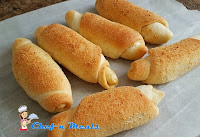Hurumanu: Climate Change and the future
Aim; To look at the different ways we can prevent climate change in the future.
Changing Our Future
- Coal
- Oil
- Gas
What is the cost? It is the cost of carbon dioxide.
The CO2 level has soured since when? Since the Industrial Revolution started.
What are the effects in the UK?
- Heatwaves
- Species can disappear.
- 19 out of 20 days warmest day.
How many climate refugees will there be in Britain by 2050? There will be 200 million refugees.
When will Fairborn be flooded? Sometimes in the next 26 years.
What are some of the other things that will be 'swallowed by the waves'?
- 1.5 m homes in England
- 100,000 home at risk from coastal
- 1,000 toxic sites
- Removing the gas emission
- Plant 1.5 billion trees
- Running a car using only solar and batteries.
What ideas are school children having about climate change?
- Protesting
- Not having children
- try to do more biking or scooter
What is the atmosphere called?
a Waste Dump.
What is the last statement the reporter made?
We know what we need to do, we have got the technology. What we lack is the
Political will.
What places will be affected? Various places in New Zealand
What else do we need to think about? Building a structure where is predicted that the sea level will rise up to.
What other places around NZ will be affected? Any of the pacific island
What does this do to our drinking water? It makes our water saltier.
What are the main concerns?
- Coastal Erosion
- Coastal Flooding
What can we do?
- Take out the amount of fossil fuel that we have.
- Using a vehicle that is not using fossil fuel.
- Building a house that's designed in a way that it doesn't waste energy.
What is the one, silver bullet solution? There is no idea, how to solve this climate change.
What is the mix of things we need to start doing?
- Using renewable energy.
- Solar heating
- Using none depended on fossil fuels vehicle.
What are 3 others you can think of?
- Using a bike or scooter to work/ school
- Reduce the amount of rubbish
- Recycle object that you can use again.
My Investigation
Where does our food come from?
- Choose your favorite food.
- Upload a picture of it.

- Draw a picture of it on A4.
On your blog answer the following questions.
- Where does the food come from (e.g. is it from another province or country, was it purchased or made locally)? The Spanish bread is from the Philippines.
- How many kilometers away did the food travel to get to you? You can make the food here in New Zealand.
- What are the main ingredients?
- 3 cups flour.
- 1 1/2 teaspoons instant dry yeast.
- 1/4 cup sugar.
- 1 teaspoon salt.
- 3/4 cup milk.
- 3 tablespoons butter - - or margarine, melted.
- 1 egg.
- How is the food packaged?
- What resources do you need to produce this food item (e.g. land, water, oil, food, etc.)? You have to use oil for the dough.
- Would this item have been processed? It could be processed but however, most are made by hand.
- Is there anything unique or significant about the food item (e.g. fair-trade, local)? By using the local ingredient to make the Spanish bread it could reduce the amount of carbon footprint that is used.
- What else do you notice about this food that affects its climate friendliness? Some ingredient is processed.
- Do you think this food is climate-friendly (Circle)? (YES) NO
- Why? Yes, Because the ingredient that it needs is already here so you don't need to buy it in another country.
- If no, what would be a better alternative?

No comments:
Post a Comment
Please structure your comments as follows:
Positive - Something done well
Thoughtful - A sentence to let us know you actually read/watched or listened to what they had to say
Helpful - Give some ideas for next time or Ask a question you want to know more about